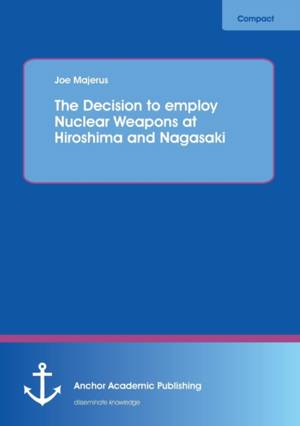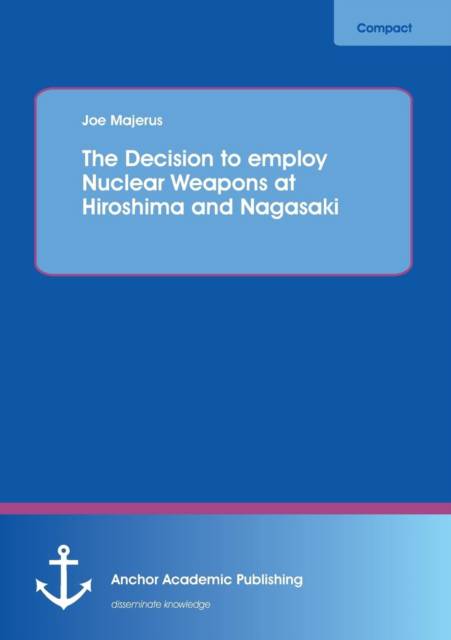
- Afhalen na 1 uur in een winkel met voorraad
- Gratis thuislevering in België vanaf € 30
- Ruim aanbod met 7 miljoen producten
- Afhalen na 1 uur in een winkel met voorraad
- Gratis thuislevering in België vanaf € 30
- Ruim aanbod met 7 miljoen producten
Zoeken
Omschrijving
Throughout human history there may hardly be found any other single decision that still causes such high amounts of scholarly debate as does the dropping of Atomic Bombs upon the Japanese city of Hiroshima in August 6th 1945, and respectively, three days later upon the city of Nagasaki. These events have caused close to 100 000 casualties in the civilian population, and yet, it does not include all of those persons who would later succumb to radiation sickness or severe birth deformations. Historians still debate the alleged plurality of motives underlying this momentous decision. The debate's result is a polarized scholarly discord which by now virtually abounds in a multitude of different theories, and competing suppositions. On the one hand, there are those scholars who argue that the decision rested solely on grounds of military expediency, foremost on the necessity to shorten a gruelling war, and to save the lives of American soldiers. On the other hand, historians offer the explanation that American policy makers above all wanted to exhibit their country's enormous military potency, and therefore, Hiroshima and Nagasaki should demonstrate the vast destructive potential which presently solely the United States had at its command, and so, counter post-war ambitions of the Soviet Union. The author of this study analyses the contextual circumstances in the spring and summer of 1945, and moreover, the principal motives of the key American government officials. Accordingly, the author offers his own substantive and conclusive answer to the question that concerns the primary factors and/or ostensibly ulterior motives that led American decision makers to issue the consequential order to detonate Atomic Bombs over Hiroshima and Nagasaki. First and foremost, the findings rest upon a critical and comprehensive engagement, and are based on the available documentary evidence from this time.
Specificaties
Betrokkenen
- Auteur(s):
- Uitgeverij:
Inhoud
- Aantal bladzijden:
- 68
- Taal:
- Engels
- Reeks:
Eigenschappen
- Productcode (EAN):
- 9783954890606
- Verschijningsdatum:
- 23/05/2013
- Uitvoering:
- Paperback
- Formaat:
- Trade paperback (VS)
- Afmetingen:
- 148 mm x 210 mm
- Gewicht:
- 99 g

Alleen bij Standaard Boekhandel
+ 68 punten op je klantenkaart van Standaard Boekhandel
Beoordelingen
We publiceren alleen reviews die voldoen aan de voorwaarden voor reviews. Bekijk onze voorwaarden voor reviews.











